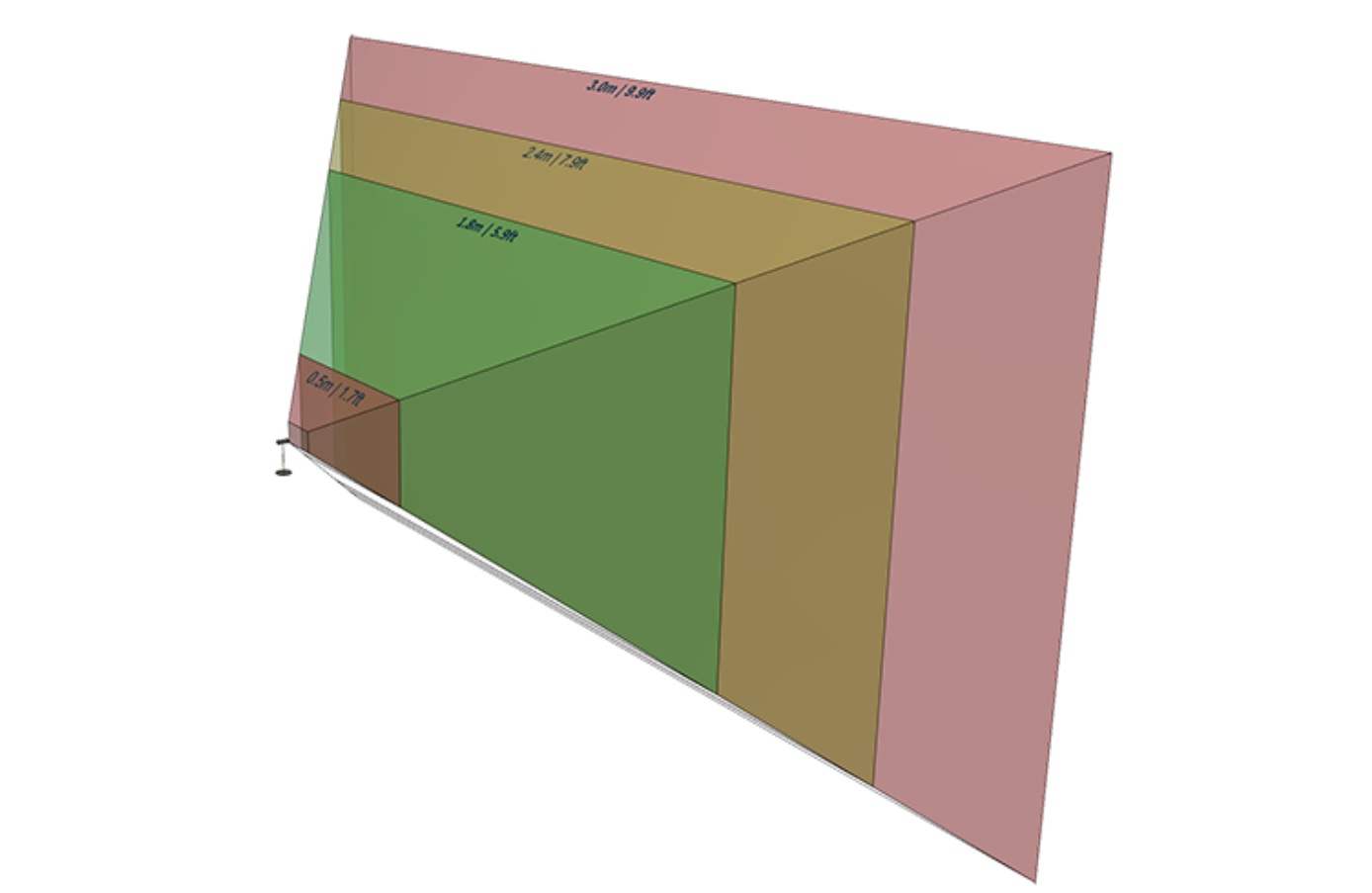Oculus Releases New Room-Scale Setup Tips, Clarifies Sensor Ranges
With the Oculus Touch controllers finally in the hands of Rift users, the company released a detailed blog featuring suggestions on how to configured multiple sensors for a room-scale experience.
The company previously offered a brief explanation of how to configure two and three-sensor room-scale setups, but the new blog provides clarified details on expected room coverage and improved suggestions for sensor placement (while also insisting that results may vary and that the implementation is still labeled "experimental").
Oculus explained that each sensor has three levels of tracking accuracy, with ideal tracking up to 6 feet and "good" tracking up to 8 feet away; past 10 feet, it becomes nearly untrackable. However, when more than a single sensor can see the controller at a given time, the tracking volume increases significantly. A two-sensor desk setup could attain ideal tracking at up to at least 10 feet away, provided that both sensors can see the touch controllers and HMD. Adding a third to the mix (behind you, in the corner) increases overall coverage, and the company claimed that it can achieve larger play areas with the three-sensor setup, but also that a two-sensor configuration can work comfortably in a bigger room.
Oculus also addressed its previous recommended maximum play area, clarifying that its seemingly-stunted suggestions are subjective to many factors, and that experimentation will lead to the best results.
“You’ll notice that, in our two-sensor 360 and three-sensor experimental roomscale setup guides, we only recommend a maximum playable area of five feet wide by five feet deep and eight feet wide by eight feet deep, respectively,” stated the Oculus blog. “That’s because of the risk of occlusion. If more than one sensor sees your Touch controller at a given time, you’re more likely to get good results at even greater distances—so you get a larger play area with three sensors compared to just two. We recommend experimenting with your available space and sensor positions to find the best results.”
Notably, the company recommended using up to only three sensors, citing that using four (or more) could impact performance or create technical issues. Another suggestion that Oculus made was to mount the sensors high above you and angled downward by 45 degrees, similar to its competitor's room-scale solution.
Although still considered an experimental feature, the room scale capabilities of the Oculus Rift with Touch controllers appears to be highly subjective, but perhaps Oculus will shed more light on its room-scale aspirations in another upcoming installment of the blog (today’s post is part one of four). Ideally (and if Oculus is indeed taking room scale seriously), it will move from the experimental realm into a tangible, baseline feature of the Oculus Rift sooner than later.
Get Tom's Hardware's best news and in-depth reviews, straight to your inbox.
Derek Forrest was a contributing freelance writer for Tom's Hardware. He covered hardware news and reviews, focusing on gaming desktops and laptops.
-
Jeff Fx > the room scale capabilities of the Oculus Rift with Touch controllers appears to be highly subjectiveReply
You're too kind.
I hope to hear one day soon that Oculus has brought it's tracking up to the standard set by the Vive. VR enthusiasts shouldn't have to put up with poor tracking on a high-end VR system. -
wifiburger is it the same clarification as Microsoft with their Kinect sensor ? cause that sucks balls if you don't have a clear / big roomReply -
KirbyKirby Seems like the Rift maximum trackable area is the same as the minimum recommended size used by most Vive games. It's odd that Vive manages to do it better with only two sensors.Reply -
Jeff Fx Reply19212536 said:Seems like the Rift maximum trackable area is the same as the minimum recommended size used by most Vive games. It's odd that Vive manages to do it better with only two sensors.
The Vive lighthouses aren't sensors, they're beacons. They sweep the play area with lasers , which are picked up by the sensors on the headset and controllers.
The Rift uses sensors that track lights on the headset and controllers. This is much harder to do, and I hope they find a way to make it work well.



